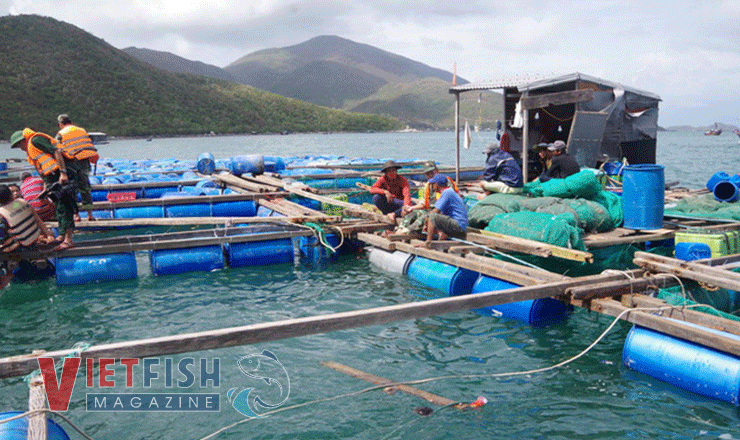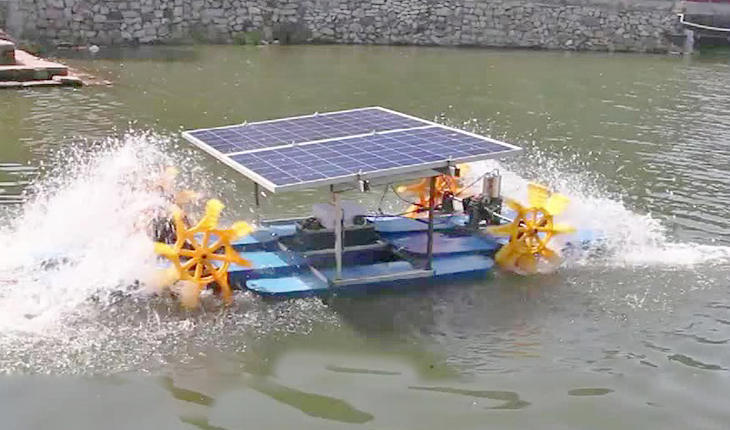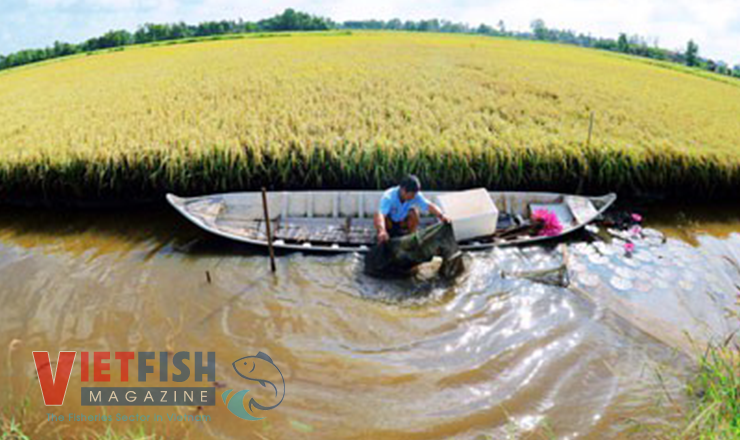Integrated farming of black tiger shrimp, mud crab, and mullet – A profitable approach
The Center for Science and Technology Application and Plant and Animal Protection in Ha Tinh City has successfully implemented a multi-species aquaculture model, combining black tiger shrimp, sea crab, and mullet in Thach Hung Commune. This innovative approach has resulted in profits of VND 250 million per hectare.

The model aims to maximize water area utilization, make use of natural food sources, reduce water pollution and disease, lower investment costs and risks, and enhance economic efficiency. In many areas of Ha Tinh, farmers have begun integrating different species within the same farming area, capitalizing on the unique biological characteristics of each species.
Over VND 250 million profit per hectare
In Thach Hung Commune (Ha Tinh City), farmers have traditionally practiced integrated farming with species like shrimp, crabs, yellowfin pompano, and seabass, but with low investment, often leading to disease outbreaks and poor economic returns. In response, the Ha Tinh City Center for Science and Technology Application and Plant and Animal Protection introduced a model in 2024 that integrates black tiger shrimp, sea crab, and mullet in ponds. This model minimizes disease risks, reduces the use of antibiotics and chemicals, cuts costs, and achieves better economic results.
The model was launched in April 2024 on a 1-hectare farm owned by Truong The Cuong in Tien Hung Village, Thach Hung Commune. The farm was stocked with 50,000 black tiger shrimp, 5,000 mullet, and 5,000 green crabs. Cuong explained that previously, his family farmed only black tiger shrimp in this area with little success.
In terms of technique, Cuong shared that floating pellets are used for fish, while shrimp and crabs are fed high-protein sinking pellets (30-40% protein). The feed size is adjusted according to the growth stages of the species to avoid waste.
 After nearly six months of farming, the mullet reached 2.5-3 fish/kg, with a yield of 1.8 tons/ha. Photo credit: nongnghiep.vn
After nearly six months of farming, the mullet reached 2.5-3 fish/kg, with a yield of 1.8 tons/ha. Photo credit: nongnghiep.vn
Feeding is done twice a day, with portions calculated as 2-3% of the animals’ body weight per day. Feed is spread across the water surface, primarily in the direction of the wind. For fish, fixed frames are used in certain parts of the pond to contain the feed during the early stages. From the beginning, a “four constants” approach is applied—consistent feed quality, quantity, location, and timing—to effectively manage feeding throughout the farming process. Additionally, minerals, nutrients, vitamin C, and fresh garlic (5-10g/kg feed) are supplemented to boost the shrimp and crabs’ immunity and growth.
For pond management, water changes of 20-30% are carried out every 10-15 days. After 1-2 days, disinfection is performed using iodine or BKC (dosage depending on the product). Two to three days after disinfection, probiotics are introduced, and lime (CaCO3) is applied at a rate of 10-15kg/1,000m3 to improve the pond bottom, helping beneficial microorganisms develop and stabilizing environmental conditions.
With stocking densities of 10 shrimp/m2, 0.5 mullet/m2, and 0.5 crabs/m2, the survival rate after nearly six months was high, exceeding 70%. The black tiger shrimp reached 25-35 shrimp/kg, yielding 1.4 tons/ha; mullet reached 2.5-3 fish/kg, yielding 1.8 tons/ha; and sea crabs reached 2.5-3 crabs/kg, yielding nearly 500 kg/ha. With current market prices, after deducting direct production costs of nearly VND 500 million/ha, the model generated a profit of over VND 250 million/ha.
Lowering disease risks and ensuring consistent income
During a visit to Cuong’s integrated aquaculture farm, Pham Duc Hai from Dong Mon Commune (Ha Tinh City) commented, “My family has a pond that’s currently unused because shrimp farming wasn’t effective. After seeing the success of this integrated model, I plan to renovate the pond and start farming right away.”
The integrated farming approach combines species with complementary characteristics, fully utilizing feed across different water levels—from the surface to the bottom—while reducing the need for environmental treatment chemicals. Mullet, in particular, is widely distributed across various aquatic environments and primarily consumes leftover food from shrimp and crabs, as well as algae and bottom-dwelling organisms.
This method helps minimize pollution from excess feed at the pond bottom, improves environmental management, and restores low-lying farming areas that are prone to disease outbreaks, ultimately increasing economic efficiency toward sustainable production. Another advantage of integrated farming is the extended harvest period of 2-3 months, providing farmers with regular and stable income.
| For areas lacking infrastructure to upgrade to high-tech farming zones, integrated farming in large ponds is an excellent fit. In the near future, the Ha Tinh City Center for Science and Technology Application and Plant and Animal Protection plans to expand this integrated model of shrimp, crab, and fish farming to more shrimp farming areas that have been prone to disease outbreaks and low productivity. |
VFM






